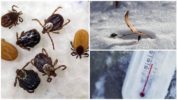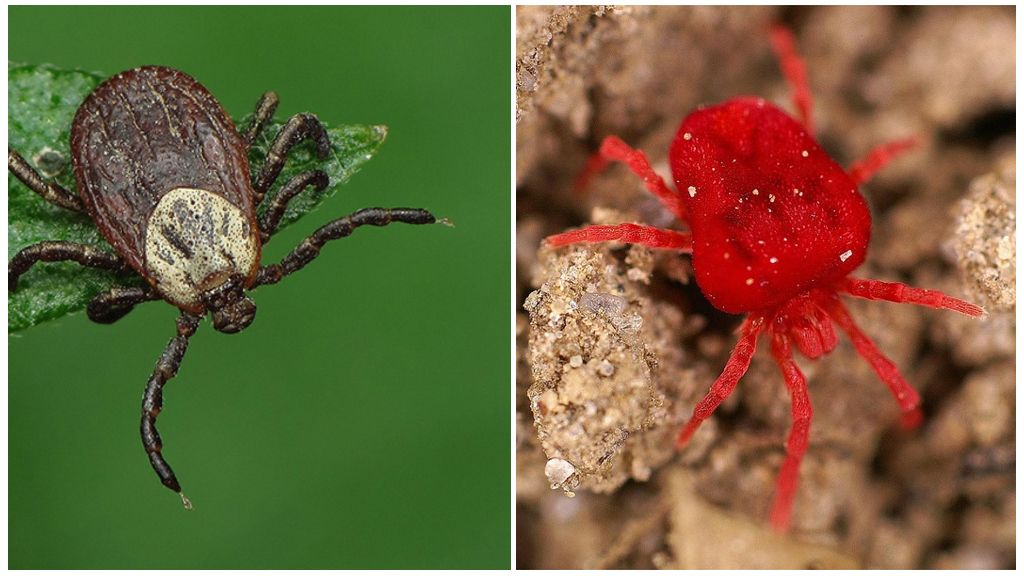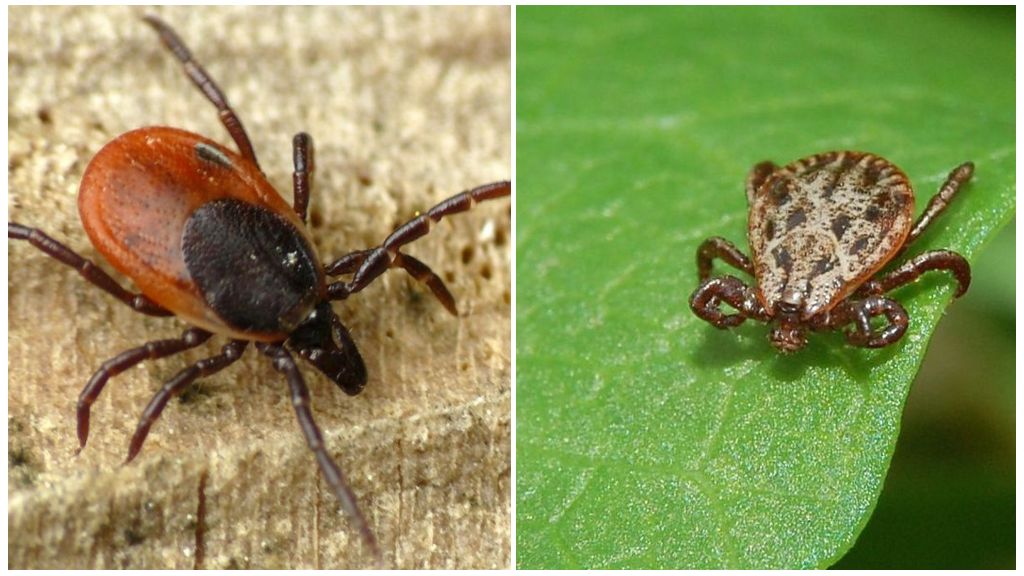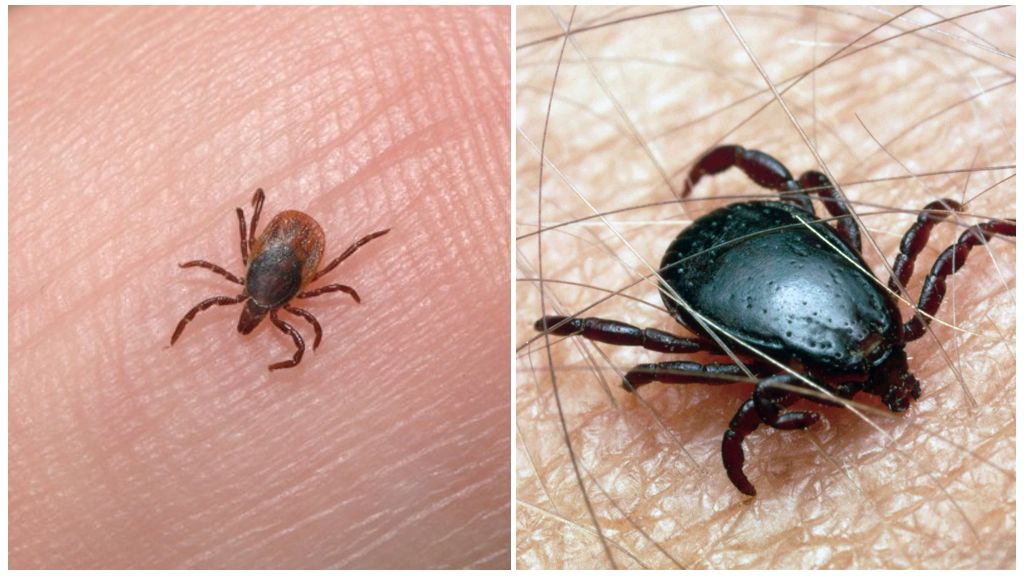- Ticks
- Ticks in the winter
Despite the fact that ticks do not belong to insects, lowering the air temperature negatively affects their activity. As soon as the cold comes, these arthropods hibernate, their vital activity decreases. Where ticks winter, whether they pose a danger in the winter, biologists studied.
Winter diapause
Ticks are activated and other parasites with increasing temperature in the spring. Those who have animals at home are especially aware of this, because they must be protected from bloodsuckers in advance.
In most cases, ticks live in the forest, but recently they are found almost everywhere. Even a harmless walk with a dog on the lawn can result in the appearance of a “lodger” on the pet’s hair. In winter, such troubles do not happen, because ticks are afraid of frost and hide during cold weather. You can find them during this period:
- in places of accumulation of a large number of fallen leaves;
- in the upper layer of soil;
- under the bark of trees;
- in rotten stumps.
In every possible way, bloodsuckers are trying to protect themselves from frosty air in winter.
Interesting!
Ticks in the coniferous forest unable to live and winter because of insufficient humidity. They are unlikely to survive the winter, because there is no leaf cover on the ground.
The manifestation of winter diapause
With a decrease in the temperature regime of air, activity also decreases ixodid ticks. A slow metabolism and good protection against the cold helps them survive unpleasant weather conditions without any problems. life cyclein which they found a cold. Pests do not need food, they just freeze before the onset of heat.
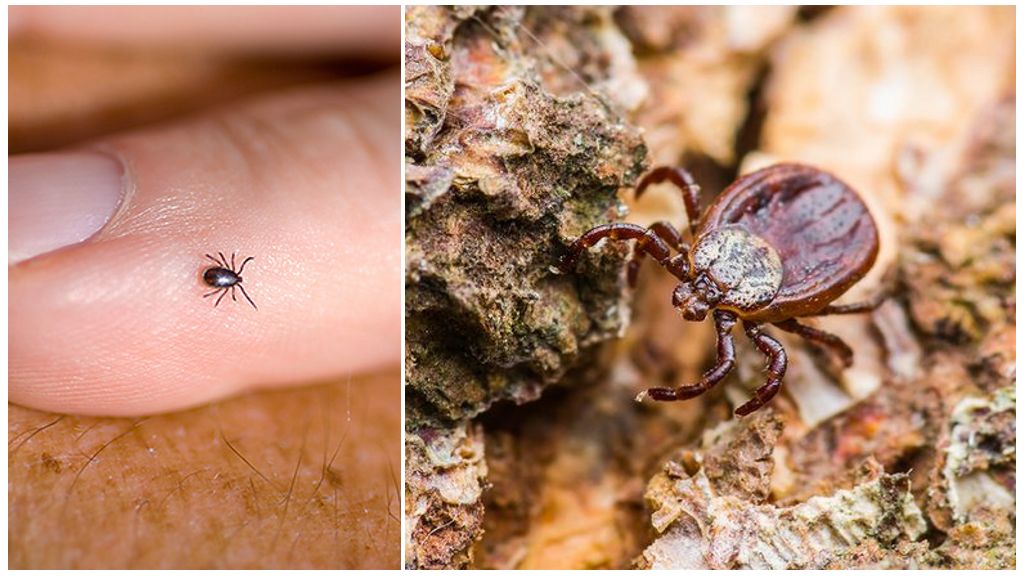
For a normal winter, a tick needs the following conditions:
- air temperature not lower than zero;
- high rate of humidity.
Ticks die at a temperature of minus 15 ° C instantly, in coniferous forests, parks and squares without the proper thickness of the leaf cover and the complete absence of grass, they die in a few hours. Surviving the cold in favorable conditions are activated with the first rays of the sun, already at + 3 ° C they will look for a victim for further life.
Global warming has a positive effect on breeding and the spread of ticks, heat and high humidity contribute to an increase in the period of their activity, which allows females to lay more eggs. The process begins in the first months of autumn, with a slight cooling of the female, having previously reinforced, they are looking for a favorable place for laying eggs. Mostly they choose:
- ravines with a lot of rotten leaves;
- thickets of tall grass;
- thicket of the forest.
If in the future the air does not warm up to sufficient temperatures, the larvae hatching from the eggs will remain at this stage of development until spring.
Are ticks dangerous in winter
When the temperature drops below + 3 ° C, parasites are not at all dangerous. Some of them continue to stay awake, but they no longer pose a threat to animals and humans. They simply do not have the strength to even cling their paws to the victim’s body.
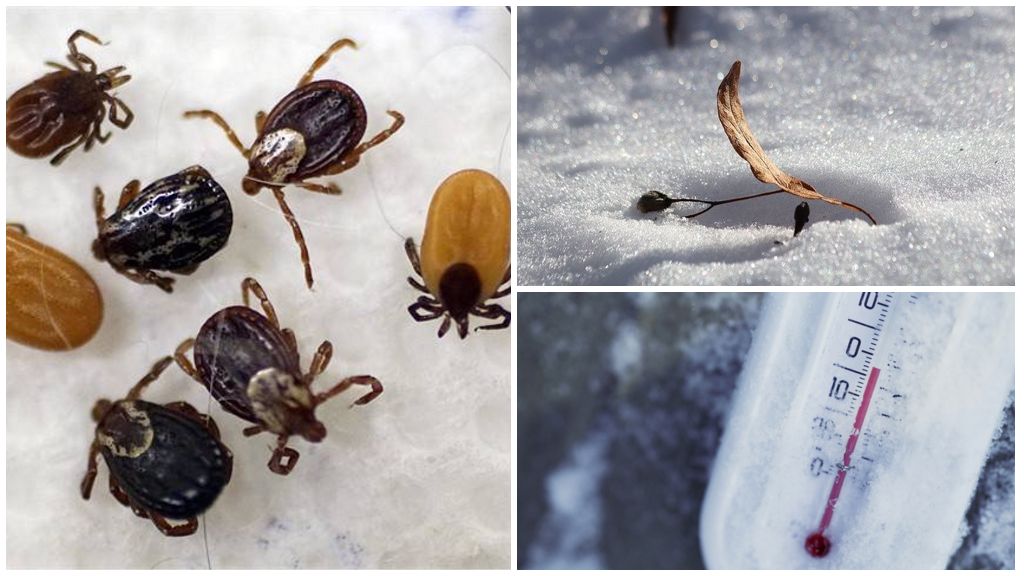
When the arrow drops below zero on the thermometer, the ticks are inactive, they fall into hibernation, in which they will remain until the onset of more favorable weather conditions.
Interesting!
The full cycle of tick development from an egg to an adult can vary from 3 to 8 years, it depends on how severe the winters were, how long the cold lasted, and also on the availability of a food source.
A small amount of snow or its complete absence, severe frosts will become fatal for parasites, under such conditions, up to 30% of both larvae and nymphs die. Adult sexually mature individuals freeze by 20%. An important point is that hungry mites tolerate colds better than those that have previously drunk blood.
Tick bite during this period is possible only if the parasite first got into the living room and, gradually warming up, began to actively search for something to profit from. It is impossible to bring a parasite from a forest or a park in winter on itself; it will make its way into the house with sticks, hay, leaves from the street. However, there were cases during abnormally warm winters, when a tick attacked a person, the air temperature during this period was above + 8 ° С.
The activity of ticks directly depends on temperature indicators, optimal for their development are + 18 ° С. Lower temperatures make the tick lethargic and passive. Decrease in indicators to -15 ° C and below become fatal. With a snowy winter and without proper shelter, the bloodsucker will die. Ticks live at a temperature near zero, but you should not expect active actions from them, their metabolism is practically zero.

